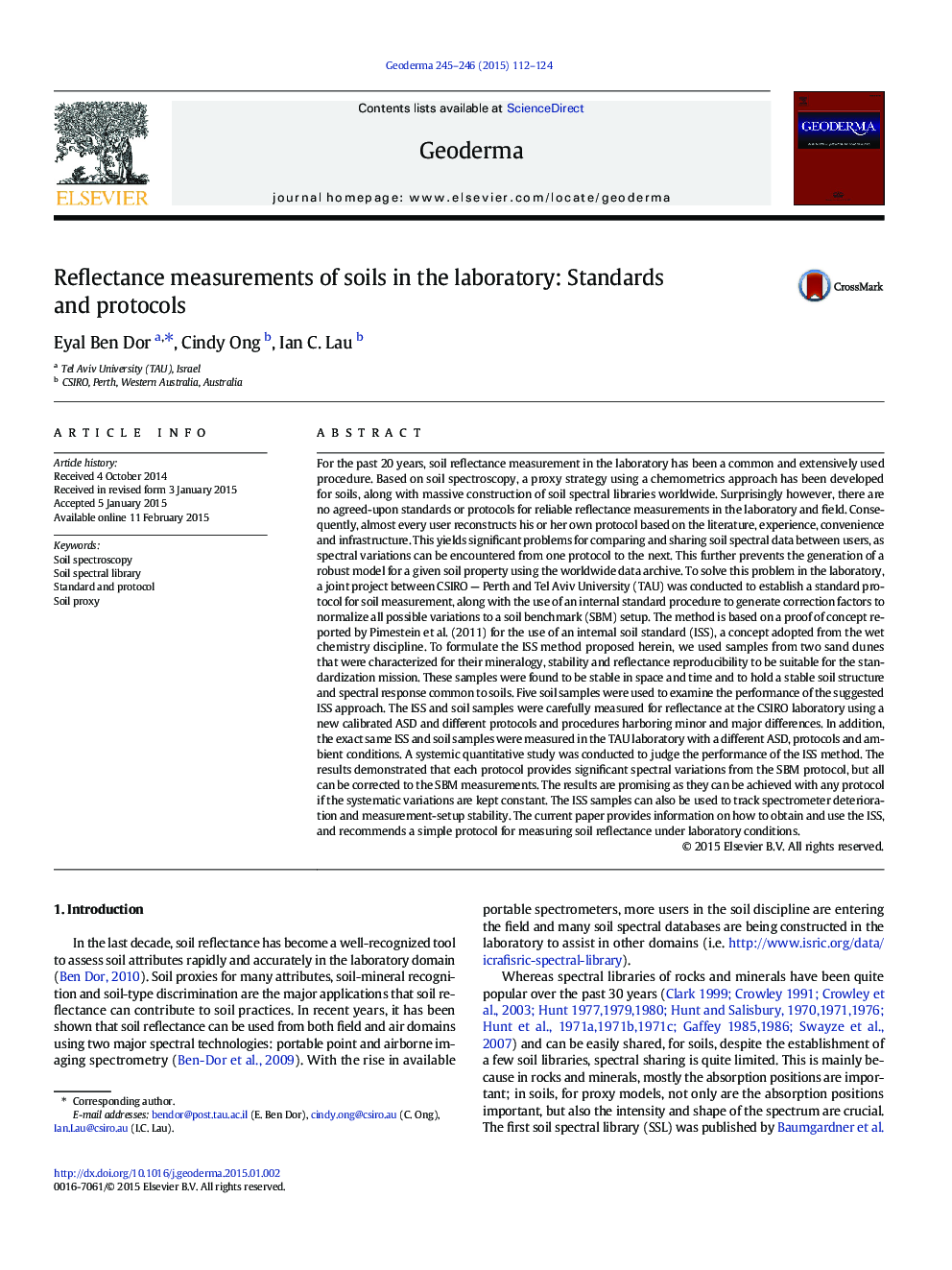| کد مقاله | کد نشریه | سال انتشار | مقاله انگلیسی | نسخه تمام متن |
|---|---|---|---|---|
| 4573195 | 1629463 | 2015 | 13 صفحه PDF | دانلود رایگان |
• An ideal internal soil standard to align soil spectral measurements was found in SW Australia.
• Minor and major variations within the spectral protocol can be aligned.
• It is possible to combine soil spectral libraries from different sources.
• The method and the internal soil sample are available for the scientific community.
• The paper's finding may establish a new era in the soil spectroscopy discipline.
For the past 20 years, soil reflectance measurement in the laboratory has been a common and extensively used procedure. Based on soil spectroscopy, a proxy strategy using a chemometrics approach has been developed for soils, along with massive construction of soil spectral libraries worldwide. Surprisingly however, there are no agreed-upon standards or protocols for reliable reflectance measurements in the laboratory and field. Consequently, almost every user reconstructs his or her own protocol based on the literature, experience, convenience and infrastructure. This yields significant problems for comparing and sharing soil spectral data between users, as spectral variations can be encountered from one protocol to the next. This further prevents the generation of a robust model for a given soil property using the worldwide data archive. To solve this problem in the laboratory, a joint project between CSIRO — Perth and Tel Aviv University (TAU) was conducted to establish a standard protocol for soil measurement, along with the use of an internal standard procedure to generate correction factors to normalize all possible variations to a soil benchmark (SBM) setup. The method is based on a proof of concept reported by Pimestein et al. (2011) for the use of an internal soil standard (ISS), a concept adopted from the wet chemistry discipline. To formulate the ISS method proposed herein, we used samples from two sand dunes that were characterized for their mineralogy, stability and reflectance reproducibility to be suitable for the standardization mission. These samples were found to be stable in space and time and to hold a stable soil structure and spectral response common to soils. Five soil samples were used to examine the performance of the suggested ISS approach. The ISS and soil samples were carefully measured for reflectance at the CSIRO laboratory using a new calibrated ASD and different protocols and procedures harboring minor and major differences. In addition, the exact same ISS and soil samples were measured in the TAU laboratory with a different ASD, protocols and ambient conditions. A systemic quantitative study was conducted to judge the performance of the ISS method. The results demonstrated that each protocol provides significant spectral variations from the SBM protocol, but all can be corrected to the SBM measurements. The results are promising as they can be achieved with any protocol if the systematic variations are kept constant. The ISS samples can also be used to track spectrometer deterioration and measurement-setup stability. The current paper provides information on how to obtain and use the ISS, and recommends a simple protocol for measuring soil reflectance under laboratory conditions.
Journal: Geoderma - Volumes 245–246, May 2015, Pages 112–124
